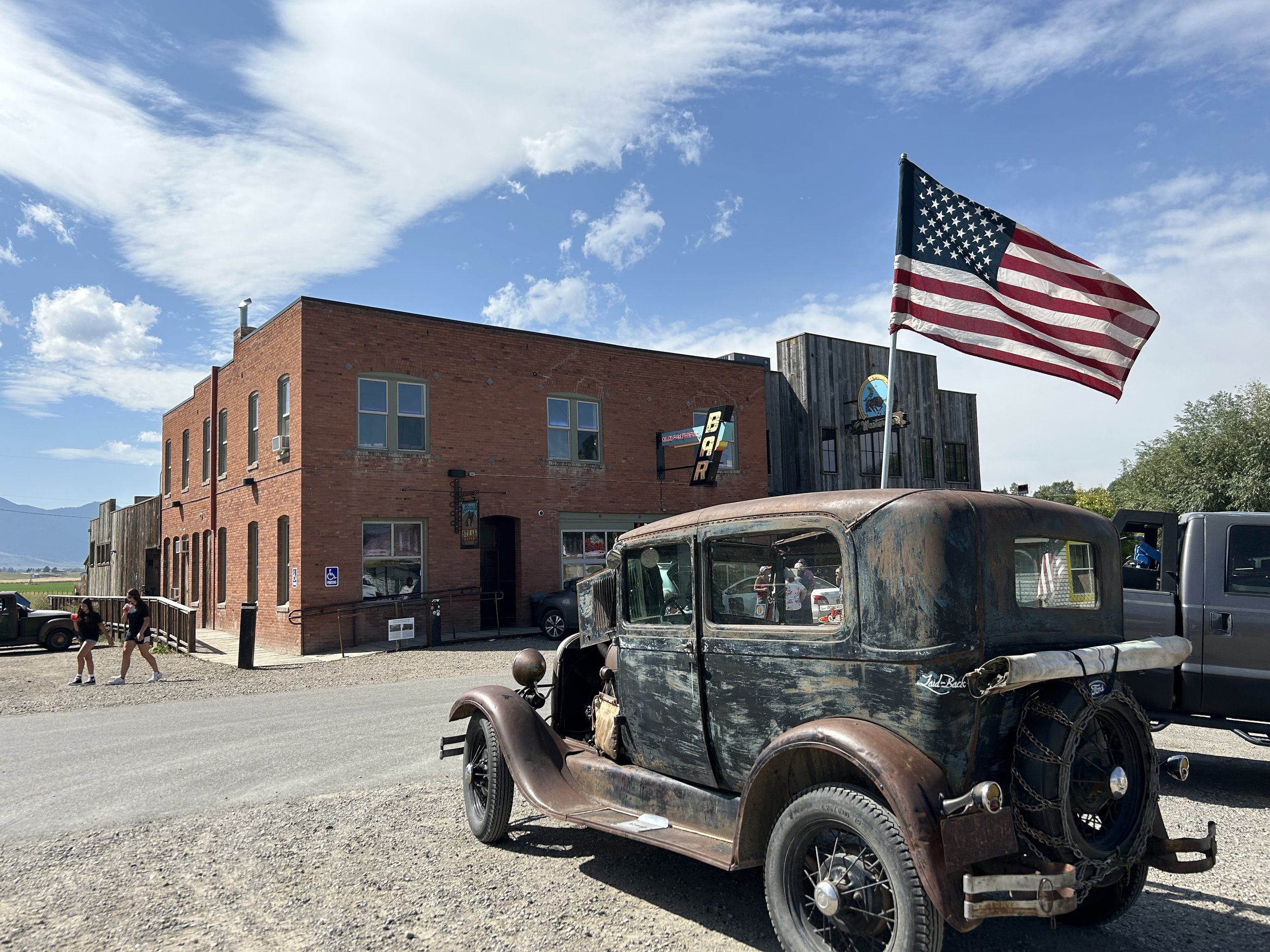
Our Vision
Through our network of local vendors, we honor the past while fostering a spirit of connection and belonging for both longtime residents and newcomers. As the valley evolves, Slabtown Market remains a steadfast reflection of our shared values—celebrating local agriculture, artisanship, and the relationships that make our community unique.




Our Mission
Slabtown Market is a community-driven farmers market in Gallatin Gateway, offering fresh, locally grown produce and goods every Thursday in August. Our goal is to support local farmers, provide access to healthy food in our community, and raise awareness for local nonprofit organizations, with a percentage of market proceeds benefiting local causes.




History
Founding and Early Development
In 1865, Zachariah Sales and his family embarked on a journey from Ontario, Canada, to the Montana Territory. They established a homestead along the Gallatin River, where they began farming and constructed a water-powered sawmill. The mill processed logs floated down the river during the spring runoff, producing slabs that led to the settlement’s initial moniker, “Slabtown.”
As more homesteaders arrived, the community expanded, prompting the establishment of essential structures such as a church, school, post office, mercantile, blacksmith shop, and saloons. In 1883, in honor of Zachariah Sales, Slabtown was renamed Salesville. A formal town plat was drawn, delineating the main streets and laying the foundation for future growth.
Economic and Social Flourishing
The late 19th and early 20th centuries marked a period of economic diversification and social enrichment for Salesville. The establishment of a grocery store in the 1880s, which also housed the post office and the town’s first telephone, became a hub for local commerce. Farmers frequently traded butter and eggs for groceries, fostering a barter economy that strengthened community bonds.
The emergence of various businesses, including a steam laundry, livery stable, and saloon, catered to the growing population’s needs. In 1906, the Salesville Mercantile Company constructed the Salesville Hall, a multifunctional building that housed a second grocery store, hardware supplies, clothing, footwear, pharmaceuticals, and a spacious dance hall. The Salesville State Bank, established in 1911 on the site where Stacey’s Bar and Grill stands today, further signifies the town’s economic maturation.
Advancements in Infrastructure and Tourism
The early 20th century ushered in significant infrastructural developments. In 1906, the Gallatin Valley Railway Company initiated the construction of a railroad track connecting Bozeman to Salesville via Bozeman Hot Springs. Completed in 1908, the Interurban Electric Car commenced operations, enhancing connectivity and commerce.
The spring of 1927 marked a pivotal moment with the construction of the Gallatin Gateway Inn by the Milwaukee Railroad. This luxurious hotel attracted tourists worldwide, serving as a gateway to Yellowstone National Park. To align with its burgeoning status as a tourist destination, the town adopted the name Gallatin Gateway during this period.
The Slabtown Market: Honoring Heritage and Fostering Community
The Slabtown Market is a tribute to Gallatin Gateway’s rich history and enduring community spirit. Embracing the town’s agricultural roots, the market serves as a gathering place where residents can connect. In a valley experiencing rapid change, the market underscores the importance of preserving the sense of community that has long defined Gallatin Gateway.
Through local vendors, the Slabtown Market hopes to honor the past but also cultivate a sense of belonging and continuity for both longstanding residents and newcomers. It embodies the community’s commitment to maintaining its unique identity while adapting to the evolving landscape of the Gallatin Valley.
In essence, the journey from Slabtown to Gallatin Gateway is a narrative of transformation, resilience, and unity—a legacy that the Slabtown Market hopes to promote.
